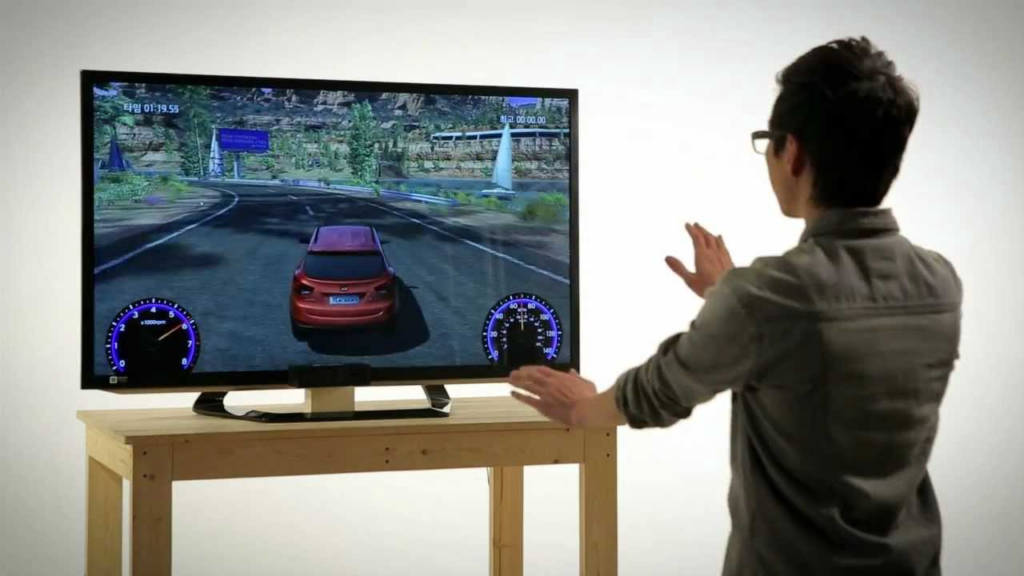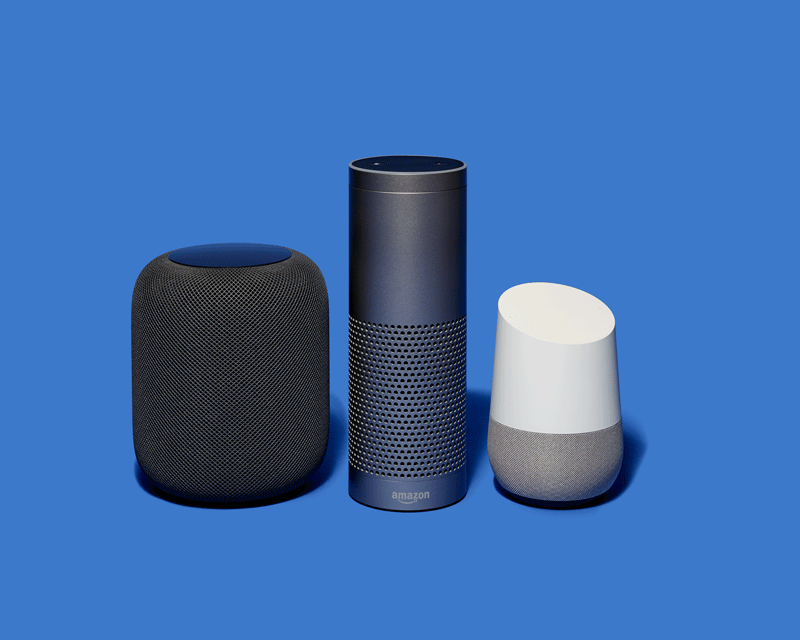[et_pb_section fb_built="1" _builder_version="4.16" global_colors_info="{}"][et_pb_row _builder_version="4.16" background_size="initial" background_position="top_left" background_repeat="repeat" global_colors_info="{}"][et_pb_column type="4_4" _builder_version="4.16" custom_padding="|||" global_colors_info="{}" custom_padding__hover="|||"][et_pb_text _builder_version="4.23.1" background_size="initial" background_position="top_left" background_repeat="repeat" global_colors_info="{}"]
An interface is any medium that facilitates interaction. For example, a language is a communication interface between two people.
A translator is an interface for an individual to interact with another who doesn’t speak the same language. Similarly, an API is an interface for computer software to interact with another software program.
Typically, when users find interaction with an interface challenging, their cognitive load is high. One way to keep the cognitive load to a minimum in software nowadays is by leveraging natural user interface concepts.
Natural User Interface Definition
A natural user interface (NUI) is a system for human-computer interaction that a user operates via intuitive actions related to natural, everyday human behaviour leveraging modalities like touch, gestures or voice.
Natural user interface design relies on a user being able to perform relatively natural gestures to control a computer application or manipulate the on-screen content.
How does NUI work?
NUI design focuses on traditional human abilities, like vision, touch, speech, handwriting, motion, cognition, creation, and exploration to replicate real-world environments. This helps to optimise interactions between physical and digital objects.
This means that NUIs leverage on natural human skills to minimise cognitive load and human distraction.
The main NUI principles are:
- Performance aesthetics- The joy of doing/using an interface.
- Direct manipulation- Direct interaction with informative objects.
- Contextual environments- Interfaces locating themselves in space and time.
- Super real- How humans perceive interfaces as super real.
- Social Interaction- Interfaces enabling users to engage with other users.
- Spatial relationships- Objects being intelligent and having auras.
- Scaffolding- Indications of how an interaction will unfold.
- Seamlessness- Achieving minimal barriers between the users and the information.
Advantages of Natural User Interface (NUI)
The primary benefit of a NUI is improved user experience. Humans are naturally attracted to things that are naturally associated with them.
Hence, in most cases, people will likely opt for a device that deploys a touch-screen interface than the traditional computer keyboard and mouse.
A touch-screen interface as an application of NUI is more interactive, intuitive, and lively, making it more enjoyable and convenient to operate with.
So, user interaction with NUIs feels more fun, easy and natural since the user can employ a broader range of basic skills in contrast to more traditional GUI interaction—which mainly happens via a mouse and a keyboard.
Applications of NUI
Speech Recognition
Speech recognition as an application of NUIs helps drivers to keep their eyes on the wheel during navigation.
Therefore, promoting safer driving experiences as drivers can make a phone call, set their GPS location or even change radio channels using verbal commands.
Brain-machine Interface
Brain-machine interfaces possess the ability to read neural signals and make use of them.
They generally work by exploiting different software programs that translate the signals into programmatic action.
These interfaces have multiple applications in the health sector as they allow paralysed patients to operate their wheelchairs.
Touch Screen
Touch screen interfaces allow users to interact with a machine or device with the touch of a finger.
Essentially, users do not have to use buttons or a mouse to hover over a GUI.
Currently, this is the most common and a more seamless humanistic way to interact with machines and devices.

Gesture recognition
Gesture tracking involves tracking user motions and then leveraging them to send instructions to a system or device.
This NUI is mostly employed in Nintendo Wii and PlayStations as their controllers have accelerometers and gyroscopes to sense the rotation, acceleration, and tilting. And thus, facilitate gesture recognition.

Gaze Tracking
Gaze tracking is a NUI application that follows the movements and motions of one’s eyes, particularly the eyeball.
Generally, with this NUI application, users can control a system or device through eye movements as exemplified by companies like Lenovo’s laptop device that operates functions through an eye gaze.
NUI vs GUI
Unlike graphical user interface (GUI) interfaces that are enabled by indirect manipulation via a keyboard and mouse, NUIs enable users to interact directly with information objects.
For instance, touch screens and gestural interaction capabilities enable users to feel like they’re physically touching and manipulating objects with their fingertips. Rather than ‘what you see is what you get’, successful NUI interfaces impose the principle of ‘what you do is what you get’.
Unlike GUIs, where multiple options and commands are presented at once and depicted with subtle hierarchy and visual emphasis, an effective NUI constitutes fewer options with interaction scaffolding.
Information objects in a NUI behave in a manner that users intuitively expect.
Natural user interfaces are dynamic and can adapt themselves in space and time. For example, elements like touch screen, speech recognition, gesture recognition, gaze tracking etc make natural user interfaces more intuitive.
With GUI, it is naturally expected for the users to understand and adapt to technology. However, NUI lets the technology adapt to a user according to the actions and requirements performed at a particular time.
On the other hand, GUIs present a user with the same set of options, regardless of the context. Conversely, NUIs are responsive to the environment and suggest what the next interaction should be.
NUI objects are intelligent, and require less cognitive investment, unlike GUIs that are highly visual and usually require a great deal of cognitive focus to utilise.

Also, read our article on “Graphical user interface.”
Natural user interface examples
- Voice assistants, like Alexa and Siri
- Conversational interfaces like The Amazon Echo Dot speaker
- Haptic interfaces, like the Apple Watch
- The Dash wireless, bio-sensing headphones.
- Touch and multi-touch interactions on mobile phones and tablets
[/et_pb_text][/et_pb_column][/et_pb_row][/et_pb_section][et_pb_section fb_built="1" _builder_version="4.20.0" _module_preset="default" global_colors_info="{}"][et_pb_row column_structure="3_4,1_4" use_custom_gutter="on" gutter_width="4" make_equal="on" disabled_on="on|on|off" admin_label="Row" _builder_version="4.19.5" _module_preset="default" background_color="#f0f0f0" width="100%" custom_padding="|25px|0px|25px|false|false" custom_css_main_element="display: flex;" global_colors_info="{}"][et_pb_column type="3_4" _builder_version="4.19.4" _module_preset="default" global_colors_info="{}"][et_pb_text content_tablet="
Respondent Recruitment Services For Representative User Insights
" content_phone="" content_last_edited="on|phone" _builder_version="4.20.0" _module_preset="default" header_font_size="42px" width="100%" custom_margin_tablet="" custom_margin_phone="" custom_margin_last_edited="on|phone" custom_padding="||0px|5%|false|false" header_font_size_tablet="42px" header_font_size_phone="42px" header_font_size_last_edited="on|desktop" header_2_text_color_tablet="" header_2_text_color_phone="" header_2_text_color_last_edited="on|desktop" global_colors_info="{}"]
End To End User Research Service In Asia
[/et_pb_text][/et_pb_column][et_pb_column type="1_4" _builder_version="4.19.4" _module_preset="default" global_colors_info="{}"][et_pb_image src="https://cdn.netizenexperience.com/wp-content/uploads/2023/01/NX-logo.png" title_text="NX-logo" align="center" disabled_on="on|on|off" _builder_version="4.19.5" _module_preset="default" width="100%" module_alignment="right" custom_padding="24px|4px|||false|false" custom_padding_tablet="24px|4px|||false|false" custom_padding_phone="24px|4px|||false|false" custom_padding_last_edited="on|desktop" global_colors_info="{}"][/et_pb_image][/et_pb_column][/et_pb_row][et_pb_row use_custom_gutter="on" gutter_width="4" make_equal="on" disabled_on="off|off|on" admin_label="Row" _builder_version="4.19.5" _module_preset="default" background_color="#f0f0f0" width="100%" custom_padding="|25px|0px|25px|false|false" custom_css_main_element="display: flex;" global_colors_info="{}"][et_pb_column type="4_4" _builder_version="4.19.4" _module_preset="default" global_colors_info="{}"][et_pb_image src="https://cdn.netizenexperience.com/wp-content/uploads/2023/01/NX-logo.png" title_text="NX-logo" align="center" show_bottom_space_tablet="" show_bottom_space_phone="" show_bottom_space_last_edited="on|phone" disabled_on="off|off|off" _builder_version="4.20.0" _module_preset="default" width="100%" module_alignment="left" custom_margin="|70px||70px|false|false" custom_padding="24px||||false|false" custom_padding_tablet="24px|180px||180px|false|false" custom_padding_phone="24px|60px||60px|false|false" custom_padding_last_edited="on|desktop" global_colors_info="{}"][/et_pb_image][et_pb_text content_tablet="
Respondent Recruitment Services For Representative User Insights
" content_phone="
End To End User Research Service In Asia
" content_last_edited="on|phone" _builder_version="4.20.0" _module_preset="default" header_font_size="42px" width="100%" custom_margin_tablet="" custom_margin_phone="" custom_margin_last_edited="on|phone" custom_padding="||0px||false|false" header_font_size_tablet="42px" header_font_size_phone="42px" header_font_size_last_edited="on|desktop" header_2_text_color_tablet="" header_2_text_color_phone="" header_2_text_color_last_edited="on|desktop" global_colors_info="{}"][/et_pb_text][/et_pb_column][/et_pb_row][et_pb_row _builder_version="4.19.4" _module_preset="default" background_color="#f0f0f0" custom_padding="|50px||50px|false|false" global_colors_info="{}"][et_pb_column type="4_4" _builder_version="4.19.4" _module_preset="default" global_colors_info="{}"][et_pb_text _builder_version="4.20.0" _module_preset="default" global_colors_info="{}"]
Key Highlights
- provides user research services for businesses & organizations
- offers a variety of research methords, including interviews, surveys & focus groups
- conduct research to understand users' needs, behaviours & attitudes
- recruit participants who match the client's target audience & provide incentives for their participation
- provides a dedicated project manager to oversee the entire research process
- project manager coordinates the recruitment of participants, the scheduling of research sessions & the delivery of results
- provide detailed reports that include key findings & recommendations based on the research
[/et_pb_text][/et_pb_column][/et_pb_row][et_pb_row column_structure="1_2,1_2" module_class="key-highlights" _builder_version="4.20.1" _module_preset="default" background_color="#f0f0f0" custom_padding="0px|||||" custom_css_main_element="display: flex;" border_color_all="RGBA(255,255,255,0)" border_width_right="25px" border_width_left="25px" locked="off" global_colors_info="{}"][et_pb_column type="1_2" _builder_version="4.19.4" _module_preset="default" global_colors_info="{}"][et_pb_button button_url="https://www.netizenexperience.com/user-research/" url_new_window="on" button_text="LEARN MORE" button_alignment="center" _builder_version="4.20.2" _module_preset="default" custom_button="on" button_text_size="16px" button_text_color="#000000" button_bg_color="#ffc947" button_border_width="0px" button_border_radius="0px" button_font="|600|||||||" button_icon="5||divi||400" global_colors_info="{}"][/et_pb_button][/et_pb_column][et_pb_column type="1_2" _builder_version="4.19.4" _module_preset="default" global_colors_info="{}"][et_pb_button button_url="https://www.netizenexperience.com/contact-us/" url_new_window="on" button_text="CONTACT US" button_alignment="center" _builder_version="4.19.4" _module_preset="default" custom_button="on" button_text_size="16px" button_text_color="#000000" button_bg_color="#ffc947" button_border_width="0px" button_border_radius="0px" button_font="|600|||||||" button_icon="5||divi||400" global_colors_info="{}"][/et_pb_button][/et_pb_column][/et_pb_row][/et_pb_section][et_pb_section fb_built="1" _builder_version="4.16" global_colors_info="{}"][et_pb_row _builder_version="4.16" background_size="initial" background_position="top_left" background_repeat="repeat" global_colors_info="{}"][et_pb_column type="4_4" _builder_version="4.16" custom_padding="|||" global_colors_info="{}" custom_padding__hover="|||"][et_pb_text _builder_version="4.20.2" background_size="initial" background_position="top_left" background_repeat="repeat" global_colors_info="{}"]
Conclusion
All things considered, in NUIs, the interaction is direct and consistent with ‘natural’ human behaviour.
As such, the user can exploit a broader range of basic skills in contrast to more traditional graphical user interface interaction that mainly happens via a mouse and a keyboard.
An effective NUI design should imitate the user’s interaction with the real-world by facilitating a direct correlation between user action and NUI reaction.
An experienced provider of user experience consulting services can help ensure that an NUI design effectively imitates the user's real-world interactions. They can work closely with businesses to identify the user's needs and preferences, conduct user research to gather valuable feedback, and develop user-centered design strategies that optimize the user experience.
The article is a part of our comprehensive series on “User interface.”
[/et_pb_text][/et_pb_column][/et_pb_row][/et_pb_section]





